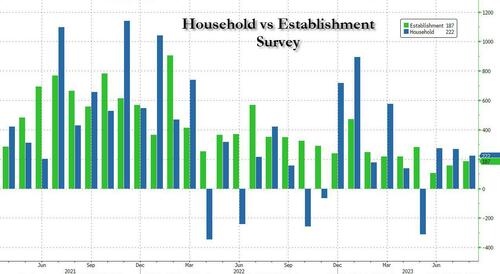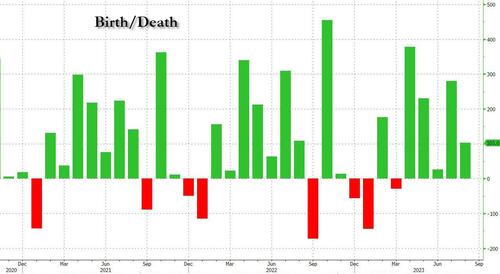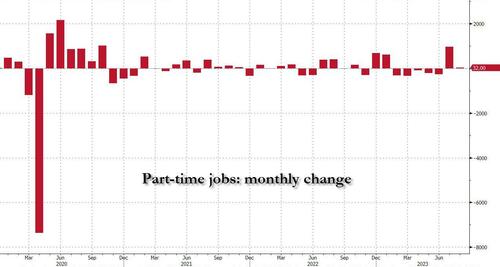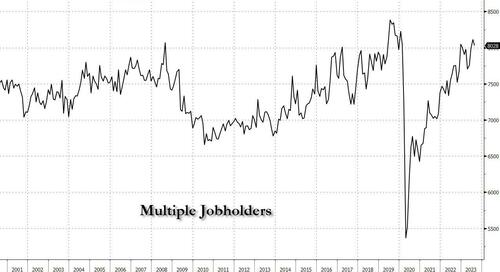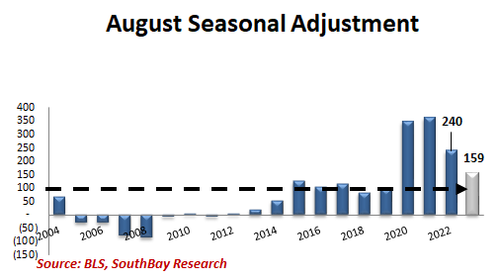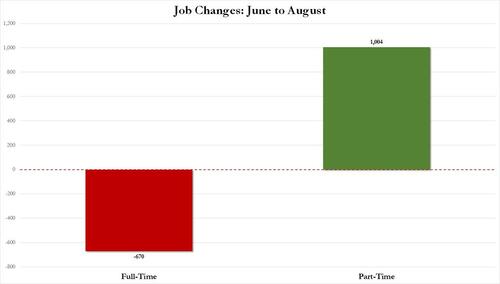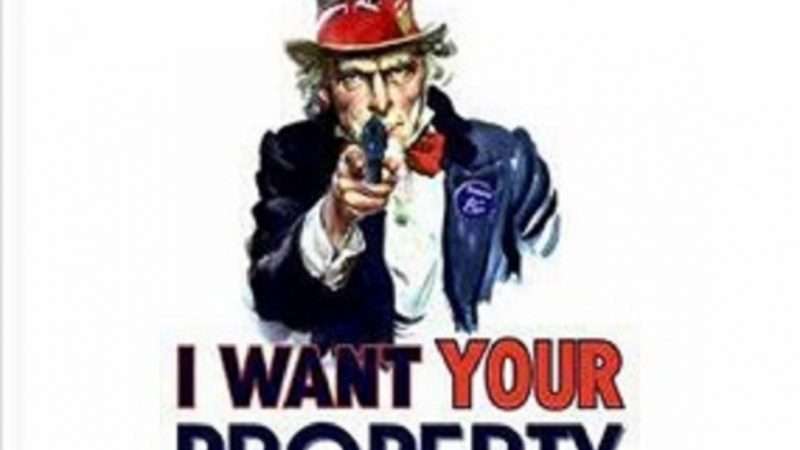From yesterday’s decision by Judge John T. Copenhaver, Jr. (S.D. W. Va.) in W. Va. Coalition Against Domestic Violence, Inc. v. Morrisey (some formatting changed); note that the court upheld some other provisions of the law, which I discuss in a separate post:
In March 2018, the West Virginia Legislature enacted House Bill 4817 [the Parking Lot Amendments], which amended the BLPA to prohibit property owners from banning firearms in the parking lot areas of their properties ….
The Parking Lot Amendments also prohibit owners, lessees, or persons “charged with the care, custody, and control” over parking lots from “violat[ing] the privacy rights of a customer, employee, or invitee … [b]y verbal or written inquiry, regarding the presence or absence of a firearm locked inside or locked to a motor vehicle in a parking lot[.]” The court will refer to this section as the “Inquiry Provision.” …
Subsection 61-7-14(d)(2)(C) prohibits the same individuals from taking “any action against a customer, employee, or invitee based upon verbal or written statements of any party concerning possession of a firearm stored inside a motor vehicle in a parking lot for lawful purposes, except upon statements made pertaining to unlawful purposes or threats of unlawful actions involving a firearm made in violation of § 61-6-24 [pertaining to threats of terrorist acts] of this code.” The court will refer to this subsection as the “Take-No-Action Provision.”
The court held that the Inquiry Provision violated the First Amendment, and that the Take-No-Action provision was unconstitutionally vague in part because of the possibility that it would be read as restricting speech as a form of action. The opinion is very long, so I thought I’d excerpt just portions of the free speech discussion (which I think is generally correct):
A content-based speech regulation is one that “singles out one particular topic of speech … for regulatory attention.” The Inquiry Provision at issue in this case does exactly that; it prohibits specific persons, those “charged with the care, custody, and control” of parking lots, from making “verbal or written inquir[ies]” on a particular topic of speech, namely, the “presence or absence of a firearm locked inside or locked to a motor vehicle in a parking lot.”
Content-based speech regulations are generally subject to strict scrutiny, “which requires the Government to prove that the restriction furthers a compelling interest and is narrowly tailored to achieve that interest.” Thus, under strict scrutiny analysis, it would be the Attorney General’s burden to show that the Inquiry Provision furthers a compelling interest of the state and is narrowly tailored to meet that end.
The Attorney General argues that … the speech regulated by the Inquiry Provision is commercial in nature …. Commercial speech, while protected by the First Amendment, has historically been “afforded less constitutional protection than other forms of speech;” accordingly, “it is important that the commercial speech concept not be defined too broadly lest speech deserving of greater constitutional protection be inadvertently suppressed.” The Fourth Circuit has generally defined commercial speech “as speech that does no more than propose a commercial transaction.”
Nevertheless, “some speech outside this ‘core notion’ may also be deemed commercial.” To determine whether speech is commercial, courts are to analyze three factors: “(1) is the speech an advertisement; (2) does the speech refer to a specific product or service; and (3) does the speaker have an economic motivation for the speech.” …
The court finds that the Inquiry Provision targets neither “advertisements” nor “specific products or services.” Similarly, the court is unable to generally conclude that business owners, employers, or owner/operators of parking lots have an economic motivation rather than a safety concern for asking patrons, employees, customers, or invitees about the presence of firearms in their vehicles. The Attorney General’s supposition that some businesses may have a commercial interest in inquiring about firearms is speculative and fails to persuade the court that the factors described by the Fourth Circuit tilt in favor of deeming the restricted speech “commercial.” Accordingly, the court is of the notion that the speech is not commercial and therefore strict scrutiny should apply.
Notwithstanding that conclusion, “the outcome is the same whether a special commercial speech inquiry or a stricter form of judicial scrutiny is applied.” The Parking Lot Amendments’ Inquiry Provision fails even under the less burdensome intermediate scrutiny analysis [applicable to commercial speech]. Under intermediate scrutiny, the Attorney General has the burden of proving that the provision is supported by a substantial governmental interest. Moreover, “[t]he limitation on expression must be designed carefully to achieve the State’s goal.”
The Attorney General has submitted two governmental interests for the Inquiry Provision. First, the Attorney General avers that the “Inquiry Provision protects Second Amendment rights against private encumbrances including discrimination on the basis of the exercise of the right to bear arms.” While “the protection of Second Amendment rights is a substantial government interest,” the Attorney General has failed to show both that the Inquiry Provision directly advances that interest and that the interest could not be served by less restrictive means.
The Attorney General argues that the provision “advances this interest because it prohibits businesses knowing and thus gaining the ability to discriminate against covered persons with guns.” Essentially, the Attorney General argues that by prohibiting the initial inquiry into the presence of a firearm, the state partially eliminates the ability of property owners to discriminate against gun holders.
Although the Second Amendment protects an individual’s right to bear arms from government encumbrances, no court has recognized a right against private encumbrances. Additionally, inquiry into the presence of a firearm in a vehicle does not necessarily amount to an encumbrance or attempted encumbrance. Such inquiries may very well be a welcome subject from firearm possessors.
Similarly, property owners may certainly inquire into the presence of a firearm in order to prepare for and provide for the safety of their customers, employees and invitees and do so without intending to banish or discriminate against the possessor. Accordingly, the court is unable to conclude that the Inquiry Provision advances the Attorney General’s first stated government interest.
The Attorney General has also failed to establish that there is no less restrictive means that would serve the purported goal. Other provisions of the Parking Lot Amendments already prohibit businesses and parking lot owners and operators from (1) excluding a lawfully possessed firearm from their parking lot areas when it is locked in a motor vehicle and out of view; (2) prohibiting customers, employees, or invitees’ vehicles from entering their parking lots because there is a lawfully-possessed firearm contained therein; and (3) from conditioning employment on an employee’s agreement not to keep a firearm in his or her vehicle.
It is unclear why an extra provision prohibiting inquiry into, or discussion of such weapons would be necessary to protect an employee or invitee’s Second Amendment rights.
The second governmental interest the Attorney General submits to support the Inquiry Provision is to protect the privacy of individuals exercising their Second Amendment rights. The protection of individual privacy has been recognized by courts as a substantial government interest.
Nevertheless, the Inquiry Provision is not sufficiently tailored to advance that interest. Individual employees, invitees, and customers “who have privacy concerns about information concerning their firearm ownership [and possession] can simply refuse to answer questions on the topic.” …
The court also held that the Take-No-Action Provision was ambiguous:
The Attorney General submits that the Take-No-Action Provision regulates conduct, not speech. The Coalition argues in rebuttal that the provision “squarely prohibits Coalition Members from engaging in a wide range of speech concerning gun possession in their parking lots.” The Coalition lists examples of that which it labels as “pure speech” that are prohibited by the provision:
Because the law bars them from taking ‘any’ action, it presumably prohibits shelter staff from: (1) asking people to leave the shelter property; (2) calling the police to tell them about a gun in someone’s vehicle; (3) posting signs describing the shelter’s opposition to having guns in vehicles; or even (4) telling other staff members about the risk of a gun in someone’s car. All of these ‘actions’ involve pure speech.
The foregoing examples, though referencing shelter staff and shelter property, apply equally to all businesses. Additionally, the Coalition contends that the Take-No-Action Provision regulates speech because it prohibits businesses and individuals from taking actions based upon speech. While the Coalition correctly points out examples of the Take-No-Action Provision’s inhibition of speech, it has elected to challenge this provision only facially, and not as-applied. It has, then, the burden of showing that all or most applications are unconstitutional. …
In the context of the Parking Lot Amendments of which it is a part, the ban of “any action against a customer, employee, or invitee” would, if otherwise valid, aptly include the banning of discriminatory conduct, against the possessor of the stored firearm who is in compliance with § 61-7-14(d)(1), consisting of barring entry to the store, business or facility served by its parking lot or a denial of service. “Any action against” may—or may not—also include an abundance of speech rendered in the interest of furthering the safety of all one’s customers, employees, invitees and others that simply asks the possessor of the firearm in the motor vehicle
- to remove the firearm
- to leave the premises or
- to never again bring a firearm
- or that which involves calling the police to ascertain whether the possessor is a convicted felon whose civil right to possess a firearm has not been restored or is a domestic violence misdemeanant similarly disqualified, or that which involves an endless variety of steps one may wish to take or request or warnings one may wish to sound that could be construed as an action against the possessor.
Because the term “any action against” is not defined, its scope is unknown and serves to chill any comment or conduct that one who is the “owner, lessor or other person charged with the care, custody and control of real property” may take or make, pursuant to § 61-7-14(d)(2)(C), based on verbal or written statements of any party concerning possession of a firearm stored inside a motor vehicle in a parking lot. The term “any action against” fails to provide a person of ordinary intelligence a reasonable opportunity to know and understand what is prohibited, so that he or she may act accordingly. “Uncertain meanings inevitably lead citizens to ‘steer far wider of the unlawful zone’ than if the boundaries of the forbidden areas were clearly marked.”
It is reasonable to expect that one who is charged with the care, custody and control of the real property will ordinarily learn of the stored firearm by the statement of another “party” and, under (d)(2)(C), be frozen into inaction, whether by way of comment or conduct, against the possessor who is a customer, employee or invitee. The exercise of one’s Second Amendment right, as permitted by the Parking Lot Amendments, does not insulate one from criticism or entreaty. Yet, the ambiguity of the Take-No-Action Provision serves to silence the speaker who risks the civil penalties of the Act by speaking out and thereby taking “any action against” the possessor….
[T]he Take-No-Action Provision is [thus] facially void for vagueness for lack of notice of that which is prohibited, in violation of Fourteenth Amendment procedural due process and in violation of First Amendment free speech….
[Moreover, t]he Parking Lot Amendment is tightly drawn … whereunder a customer, employee or invitee who is in possession of a legally owned firearm may store or maintain it on a business’ parking lot when the firearm is
- Lawfully possessed
- Out of view
- Locked inside or locked to a motor vehicle in a parking lot, and
- When the possessor is lawfully allowed to be present in that area.
The Take-No-Action Provision … is not narrowly drawn to effectuate [this provision]. Rather, the owner, lessee or, more likely, the “person charged with the care, custody and control of real property” may not “take any action against a customer, employee or invitee based upon verbal or written statements of any party concerning possession of a firearm stored inside a motor vehicle in a parking lot for lawful purposes except upon statements made pertaining to unlawful purposes or [terrorist] threats.” Consequently, the Take-No-Action Provision applies even when the motor vehicle is not locked and the firearm is in view. That is, the provision applies where the firearm, possessed and stored for lawful purposes, is carelessly left in plain view in an unattended motor vehicle that is unlocked. That provision needlessly puts at risk the well-being of customers, employees, invitees and others who are present on otherwise private property should the unsecured firearm fall, opportunistically, into the hands of one intent upon mischief, perhaps of momentous proportions; it is not needed to protect the government’s legitimate interest in advancing Second Amendment rights and protecting privacy….
The post Court Strikes Down W. Va. Law Restricting Property Owners from Asking Visitors About Whether They Have Guns in Their Parked Cars appeared first on Reason.com.
from Latest https://ift.tt/SCqx4YT
via IFTTT


